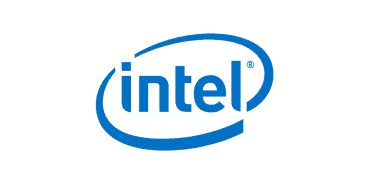
The Vertica SQL database and in-database machine learning solutions support the entire predictive analytics process with massively parallel processing and a familiar SQL interface.
After a brief dip due to the impact of the pandemic, business analytics services resumed double-digit growth in 2021 and 2022, according to IDC. Why? There is a great need to improve business outcomes using insights from analytics and other techniques, including machine learning.
What most businesses find when undertaking new analytics and machine learning (ML) projects is that their current infrastructure is not up to the task. The projects typically need compute and storage capabilities that are not typically available in most businesses. And in many cases, they need access to new analytics and ML tools and technologies.
![Get projects into production to deliver on the promise of machine learning. [Learn more]](https://no-cache.hubspot.com/cta/default/8019034/0eec226c-7ae0-4d5a-ba1d-b3046bfa397d.png)
The situation is a perfect storm for hybrid cloud. Hybrid cloud gives businesses the flexibility to quickly scale compute and storage infrastructure. It also allows the ability to mix-and-match, meaning a business can selectively use cloud or stay on-premises for different aspects of their workloads and data as needed. And they change the mix over time to meet evolving requirements.
Deciding on capabilities, technologies, and more
There are many variables in play when undertaking analytics and ML projects. Adequate compute, storage, and tools must be in place to achieve a project’s business objectives. With hybrid cloud, there are many options available.
Take compute resources. If a business has made a substantial investment in on-premises high-performance computing capabilities, it can retain that investment and use the systems to analyze data on-premises or using cloud services.
In contrast, if a business does not have the existing compute infrastructure, a hybrid cloud approach to analytics and ML allows it to leverage cloud compute instances and resources. That saves the huge CapEx spending that would be needed to install the capabilities on-premises. And it gives the business access to newer technologies such as GPUS and ARM processors that it might not have experience with using. Such an approach also helps a business get projects going much faster than would be the case when building an on-premises compute infrastructure.
There are similar issues with storage where hybrid cloud can play an important role. Again, a business may have an existing on-premises database, its CRM or ERP system, for example. It may want to run sophisticated analytics against that database to improve operations or enhance the customer experience. With a hybrid cloud approach, the data can remain on-premises. And the analytics can be run either on-premises or using a cloud service.
Alternatively, a business might have a large cloud database or a third-party cloud database that it wants to use in an analytics project. With hybrid cloud, the database can remain where it is, hosted by a provider, and the analytics can be run on-premises or using a public cloud service.
Hybrid delivers the flexibility needed today
The constant theme with hybrid is that businesses can retain what works, keeping workloads and storage where they are, and still get the insights their analytics projects are designed to deliver.
Why? Modern analytics and ML projects must address variables with regard to compute, storage, and tools. That alone is challenging enough, but there is even more to consider. Perhaps the most challenging aspect of many projects today is that requirements change greatly over the lifetime of a project.
For example, a company might need vast compute and storage resources to train a machine learning application. In a typical scenario, a large image dataset might be used to train the application. But once the model is trained, much less compute and storage capacity are needed. In traditional approaches, a business would have built the compute and storage infrastructure to conduct the initial phase of the project. And then that capacity would sit idle once the training is done. Hybrid cloud provides the flexibility to scale using public cloud services during that initial stage. And once the work is done, the instances and cloud resources can be dialed down.
Additional factors to consider
One particularly new area of focus that lends itself well to a hybrid approach is the growing use of external data. Many companies are now analyzing their own datasets but are then complementing that analysis over time with third-party data. A hybrid cloud approach allows that data to be used when needed to boost the quality of the analytics.
Examples abound in numerous fields. For example, a financial services organization might use third-party data to better understand its audience and target prospective customers. Or a healthcare organization might combine anonymized patient records with data from a fitness app vendor to better estimate the efficacy of a program based on the extent to which a person exercises.
One additional aspect to consider is the analytics and ML software and tools themselves. If a business has heavily invested in such solutions, it can retain them and run them wherever they work best. But many businesses are starting from scratch with modern analytics and ML projects. In such cases, they may lack the internal expertise to select, deploy, manage, and use these tools. In such cases, public cloud analytics and ML offerings can help.
For example, modern databases offer capabilities, tools, and support that are more advanced than many on-premises technologies. Many major database vendors and cloud providers offer numerous analytics and ML solutions. And more importantly, they have large ecosystems that can greatly help speed projects along. For instance, many have complementary tools for ingesting and preparing data for analysis. And some have extensive collections of tools that let a business build end-to-end hybrid cloud analysis pipelines.
![Get projects into production to deliver on the promise of machine learning. [Learn more]](https://no-cache.hubspot.com/cta/default/8019034/0eec226c-7ae0-4d5a-ba1d-b3046bfa397d.png)
Teaming with a technology partner
A good example of this is the solution from Vertica, a Micro Focus line of business. The Vertica SQL database and in-database machine learning solutions support the entire predictive analytics process with massively parallel processing and a familiar SQL interface.
The availability of in-database machine learning offers several advantages. First, data scientists do not have to move data and wait for results when analysis is run on poorer-performing compute platforms. That alone saves time. But with an in-database machine learning capability, processing power can be scaled as needed.
A last word
The one thing constant about modern analytics and ML projects is change. Everything is subject to change. Business objectives often change over time. Compute and storage requirements change over time. New data is frequently added to the mix. New compute technologies and analysis methods become available over time. Hybrid cloud offers many benefits for analytics and ML, and it is well-suited to meet the varying demands over time.
By using a solution that converges databases and analytics by virtue of in-database machine learning, businesses eliminate the need to move and prep data. They can then create concise end-to-end workflows allowing predictive analytics to be operationalized. That is a true benefit of the convergence of databases and machine learning.
Learn more: https://www.vertica.com/product/database-machine-learning/
Read the other blogs in this series:




























